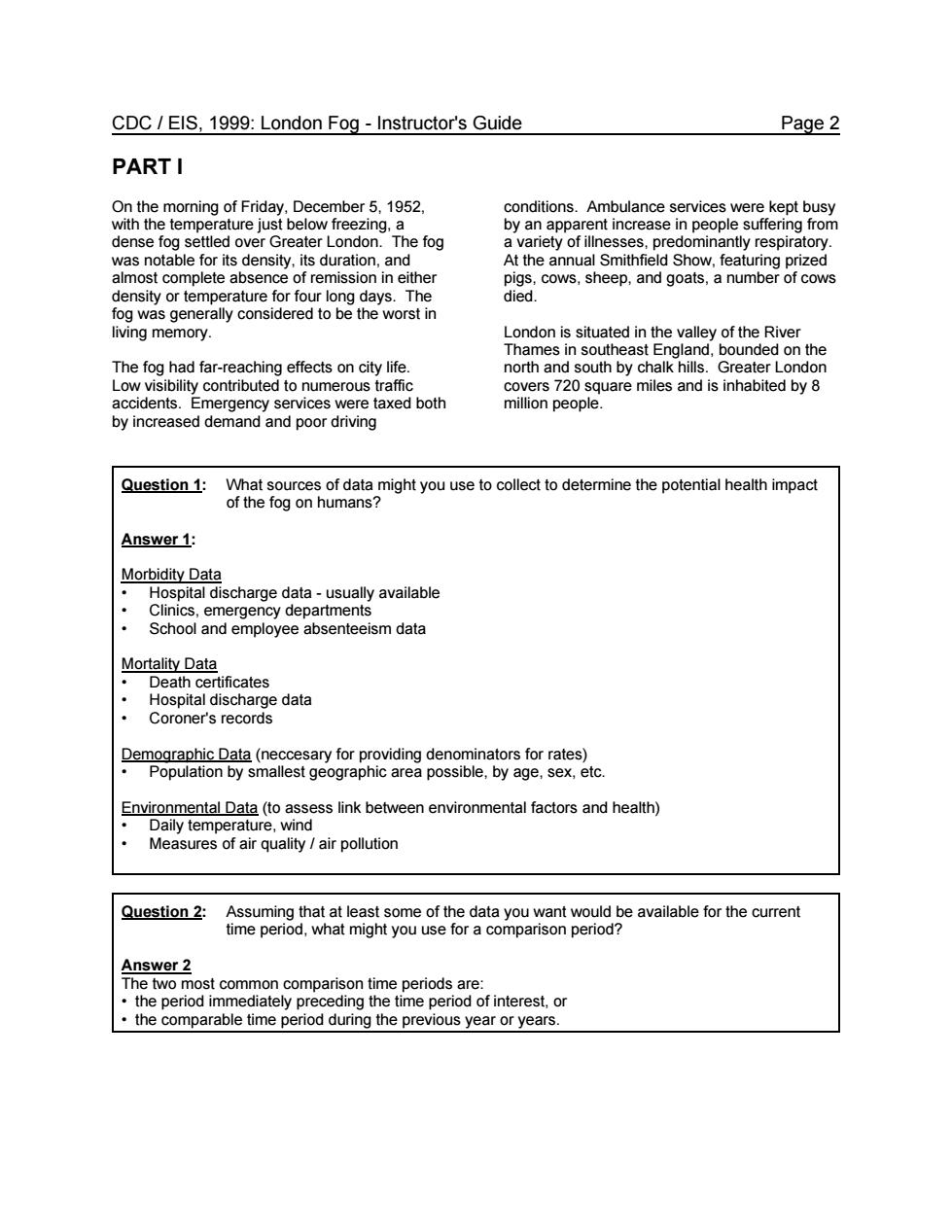正在加载图片...

CDC/EIS,1999:London Fog-Instructor's Guide Page 2 PARTI Onthe moing Friday ecember. o Ambulanceby At the annual Smithfield Show.featuring prized and goats. fog was generally considered to be the worst in living memory. London is situated in the valley of the River The fog had far-reaching effects on city life 0amsadns8omhe9et5Relanc8aeae8mab8 Low visibility contributed to numerous traffic covers 720 square miles and is inhabited by8 dents million people by incre Question 1: Mh8gCnomane,mgmyou ect to determine the potential health impact Answer 1: Morbidity Data Hospital discharge data-usually available Hospital discharge data Coroner's records Parpea2neog80pmeaegoseysocok2c Environmental Data(to assess link between environmental factors and health) Daily temperature,wind Measures of air quality air pollution Question 2:Assuming that at least some of the data you want would be available for the current time period.what might you use for a comparison period? ely prec ding the time period of interest,or uring the previous year or years.CDC / EIS, 1999: London Fog - Instructor's Guide Page 2 PART I On the morning of Friday, December 5, 1952, with the temperature just below freezing, a dense fog settled over Greater London. The fog was notable for its density, its duration, and almost complete absence of remission in either density or temperature for four long days. The fog was generally considered to be the worst in living memory. The fog had far-reaching effects on city life. Low visibility contributed to numerous traffic accidents. Emergency services were taxed both by increased demand and poor driving conditions. Ambulance services were kept busy by an apparent increase in people suffering from a variety of illnesses, predominantly respiratory. At the annual Smithfield Show, featuring prized pigs, cows, sheep, and goats, a number of cows died. London is situated in the valley of the River Thames in southeast England, bounded on the north and south by chalk hills. Greater London covers 720 square miles and is inhabited by 8 million people. Question 1: What sources of data might you use to collect to determine the potential health impact of the fog on humans? Answer 1: Morbidity Data • Hospital discharge data - usually available • Clinics, emergency departments • School and employee absenteeism data Mortality Data • Death certificates • Hospital discharge data • Coroner's records Demographic Data (neccesary for providing denominators for rates) • Population by smallest geographic area possible, by age, sex, etc. Environmental Data (to assess link between environmental factors and health) • Daily temperature, wind • Measures of air quality / air pollution Question 2: Assuming that at least some of the data you want would be available for the current time period, what might you use for a comparison period? Answer 2 The two most common comparison time periods are: • the period immediately preceding the time period of interest, or • the comparable time period during the previous year or years